
Independent analysis of AI models and hosting providers - choose the best model and API provider for your use-case
8 subscribers
How to get URL link on X (Twitter) App


 Stirrup agents can be easily set up in just a few lines of code
Stirrup agents can be easily set up in just a few lines of code
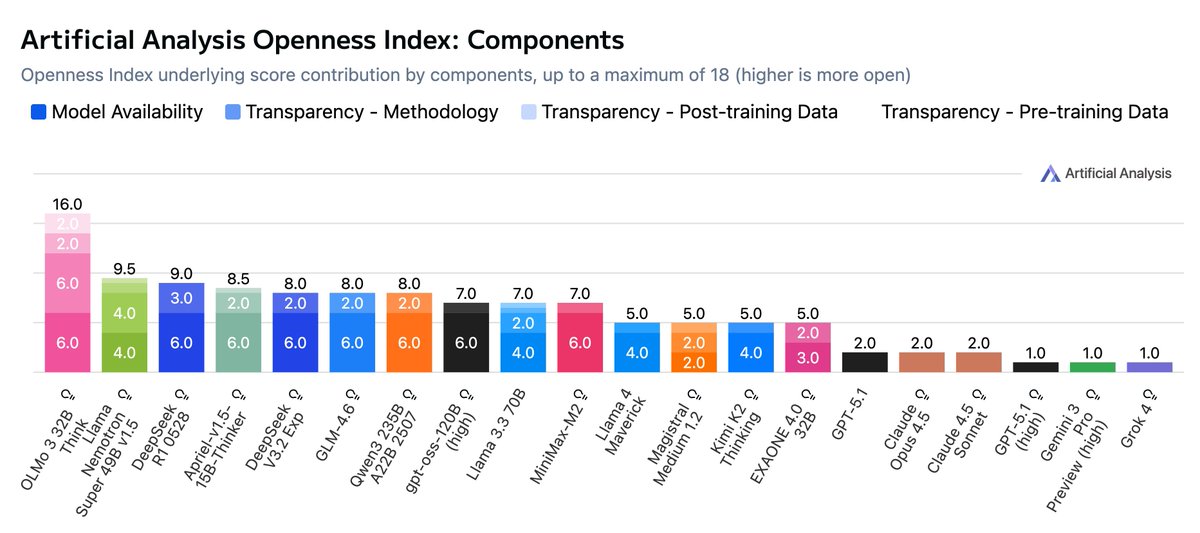
 The Openness Index breaks down a total of 18 points across the four subcomponents, and we then represent the overall value on a normalized 0-100 scale. We will continue to review and iterate this framework as the model ecosystem develops and new factors emerge.
The Openness Index breaks down a total of 18 points across the four subcomponents, and we then represent the overall value on a normalized 0-100 scale. We will continue to review and iterate this framework as the model ecosystem develops and new factors emerge. 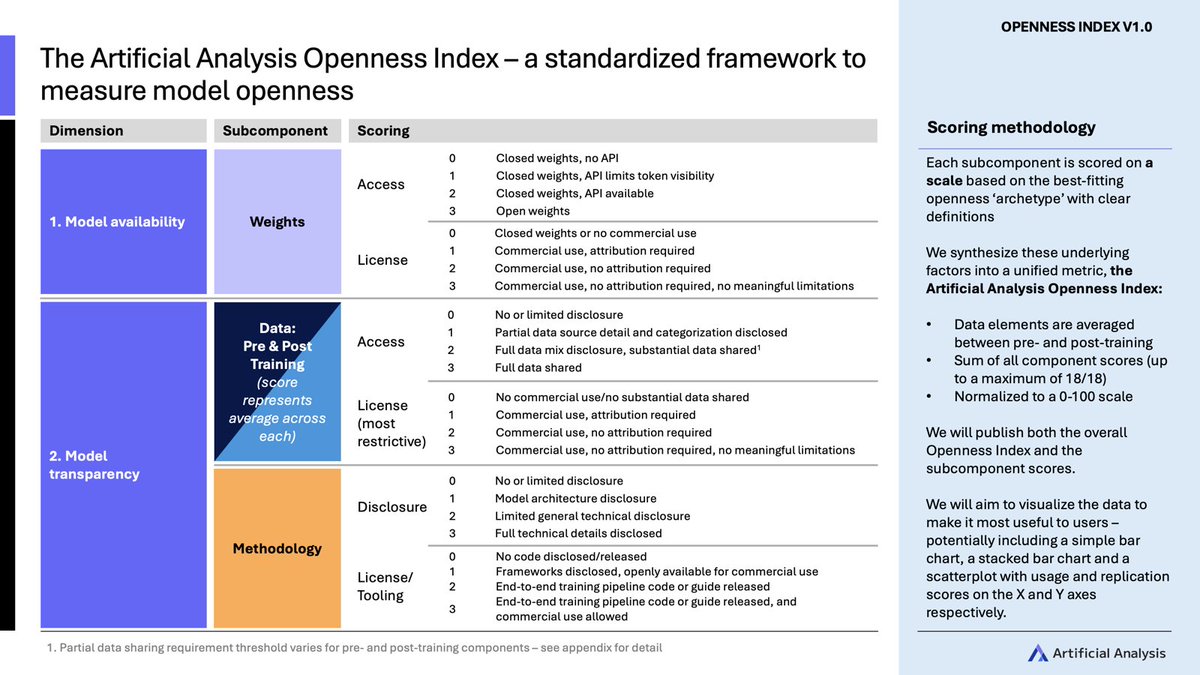
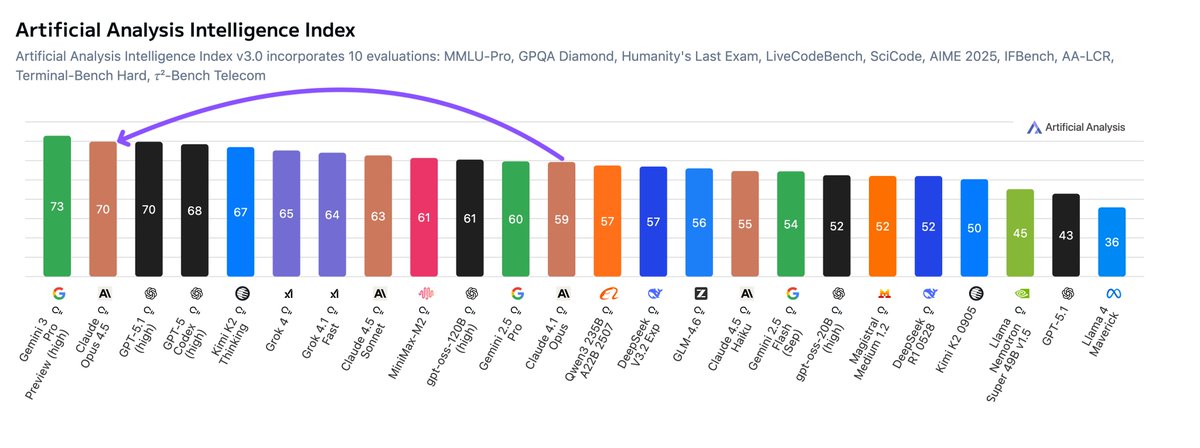
 A key differentiator for the Claude models remains that they are substantially more token-efficient than all other reasoning models. Claude Opus 4.5 has significantly increased intelligence without a large increase in output tokens, differing substantially from other model families that rely on greater reasoning at inference time (i.e., more output tokens). On the Output Tokens Used in Artificial Analysis Intelligence Index vs Intelligence Index chart, Claude 4.5 Opus (Thinking) sits on the Pareto frontier.
A key differentiator for the Claude models remains that they are substantially more token-efficient than all other reasoning models. Claude Opus 4.5 has significantly increased intelligence without a large increase in output tokens, differing substantially from other model families that rely on greater reasoning at inference time (i.e., more output tokens). On the Output Tokens Used in Artificial Analysis Intelligence Index vs Intelligence Index chart, Claude 4.5 Opus (Thinking) sits on the Pareto frontier.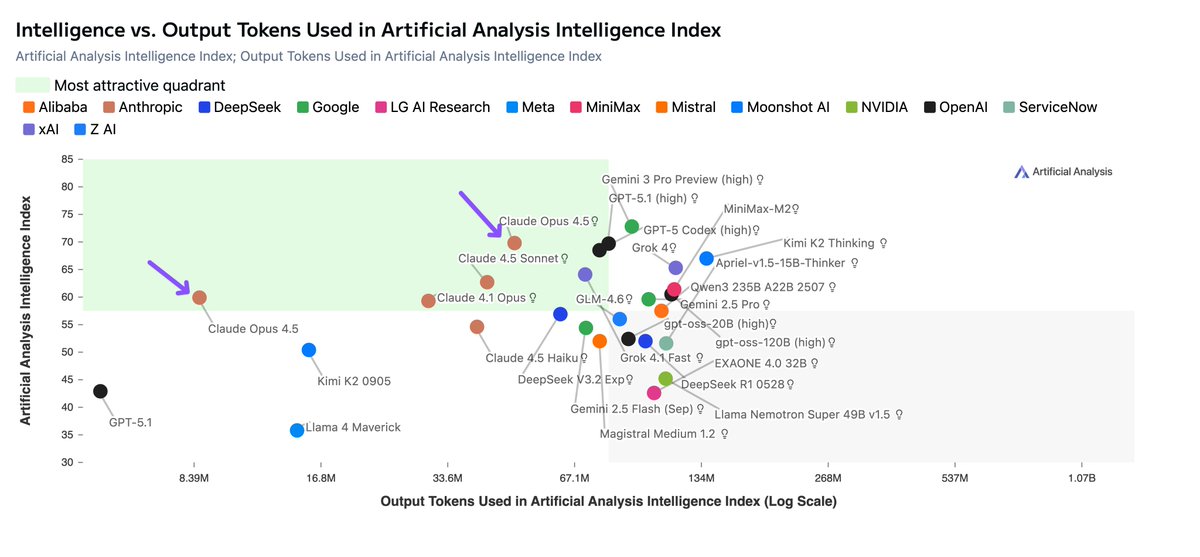
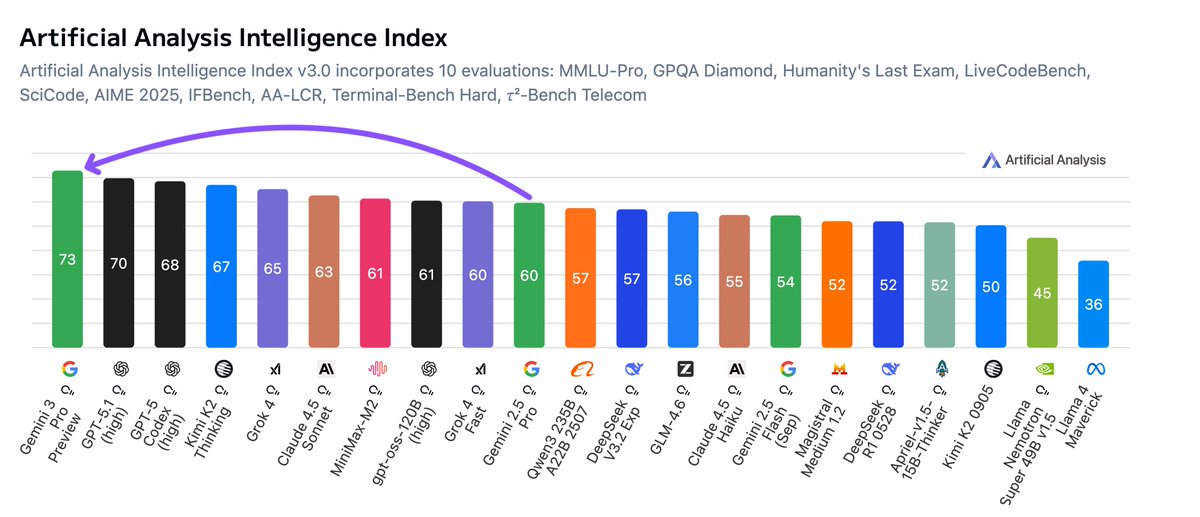
 For the first time, Google has the most intelligent model, with Gemini 3 Pro Preview improving on the previous most intelligent model, OpenAI’s GPT-5.1 (high), by 3 points
For the first time, Google has the most intelligent model, with Gemini 3 Pro Preview improving on the previous most intelligent model, OpenAI’s GPT-5.1 (high), by 3 points 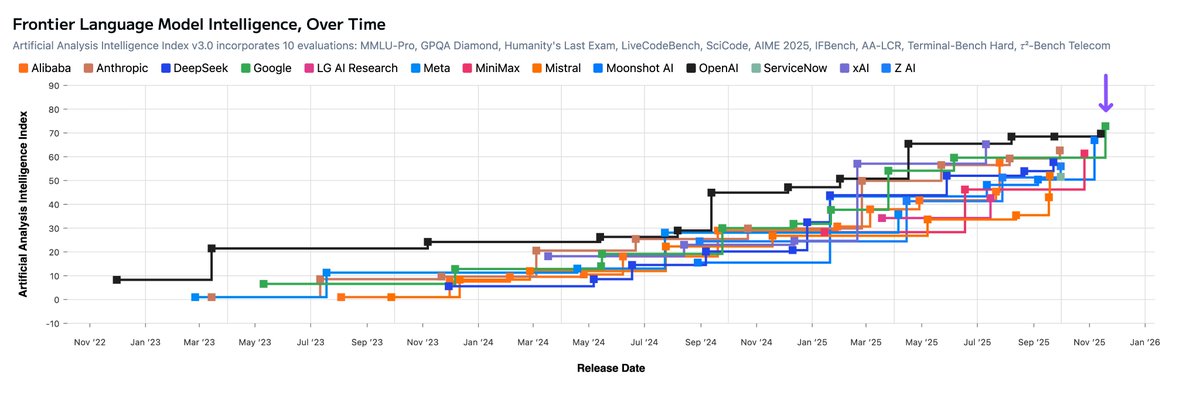

 Grok 4 by @xai, GPT-5 by @OpenAI and Gemini 2.5 Pro by @GoogleDeepMind achieve the highest accuracy in AA-Omniscience. The reason they do not achieve the highest Omniscience Index due to the low hallucination rates of @AnthropicAI’s Claude models
Grok 4 by @xai, GPT-5 by @OpenAI and Gemini 2.5 Pro by @GoogleDeepMind achieve the highest accuracy in AA-Omniscience. The reason they do not achieve the highest Omniscience Index due to the low hallucination rates of @AnthropicAI’s Claude models 

 Sample prompt on Inworld TTS 1 Max: “Your gut microbiome contains trillions of bacteria that influence digestion, immunity, and even mental health through the gut-brain axis.”
Sample prompt on Inworld TTS 1 Max: “Your gut microbiome contains trillions of bacteria that influence digestion, immunity, and even mental health through the gut-brain axis.”


 Granite 4.0 H Small’s (Non Reasoning) output token efficiency and per token pricing offers a compelling tradeoff between intelligence and Cost to Run Artificial Analysis Intelligence Index
Granite 4.0 H Small’s (Non Reasoning) output token efficiency and per token pricing offers a compelling tradeoff between intelligence and Cost to Run Artificial Analysis Intelligence Index 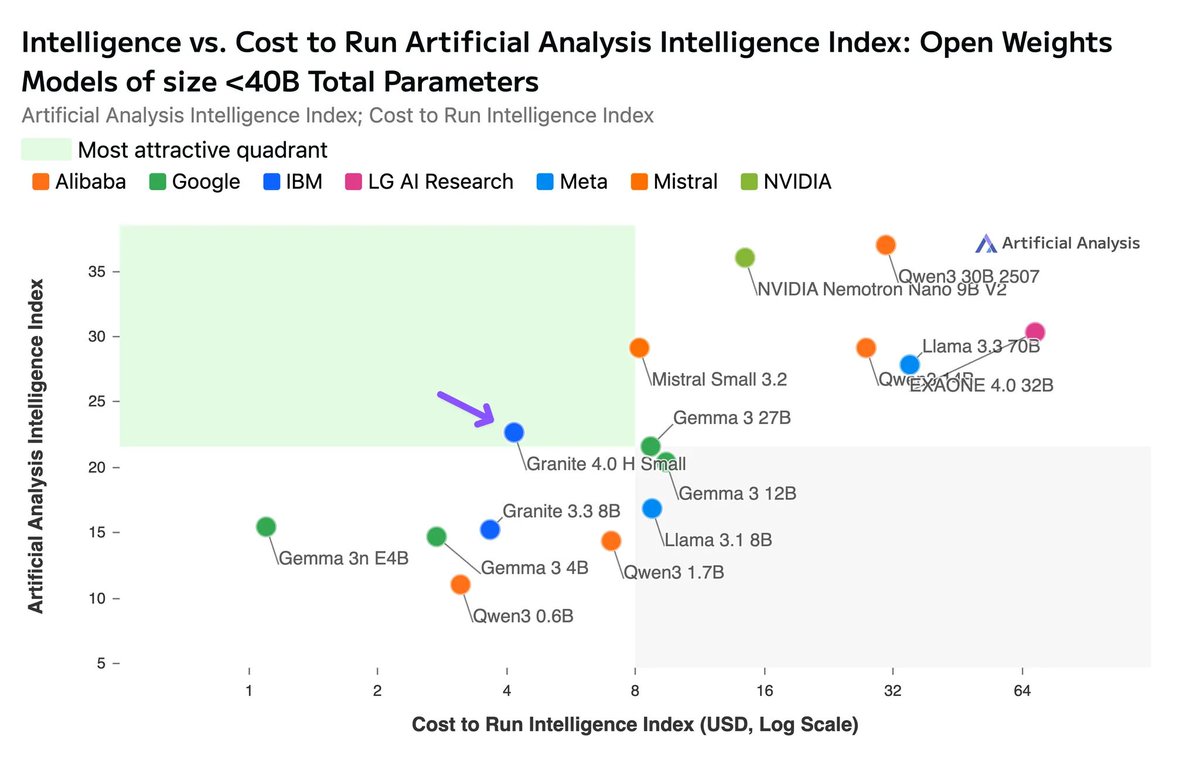

 [Prompt 1/5] Change the sign to state "SCHOOL Zone Ahead”
[Prompt 1/5] Change the sign to state "SCHOOL Zone Ahead” 

 Token usage (verbosity): GPT-5 with reasoning effort high uses 23X more tokens than with reasoning effort minimal. Though in doing so achieves substantial intelligence gains, between medium and high there is less of an uplift.
Token usage (verbosity): GPT-5 with reasoning effort high uses 23X more tokens than with reasoning effort minimal. Though in doing so achieves substantial intelligence gains, between medium and high there is less of an uplift.
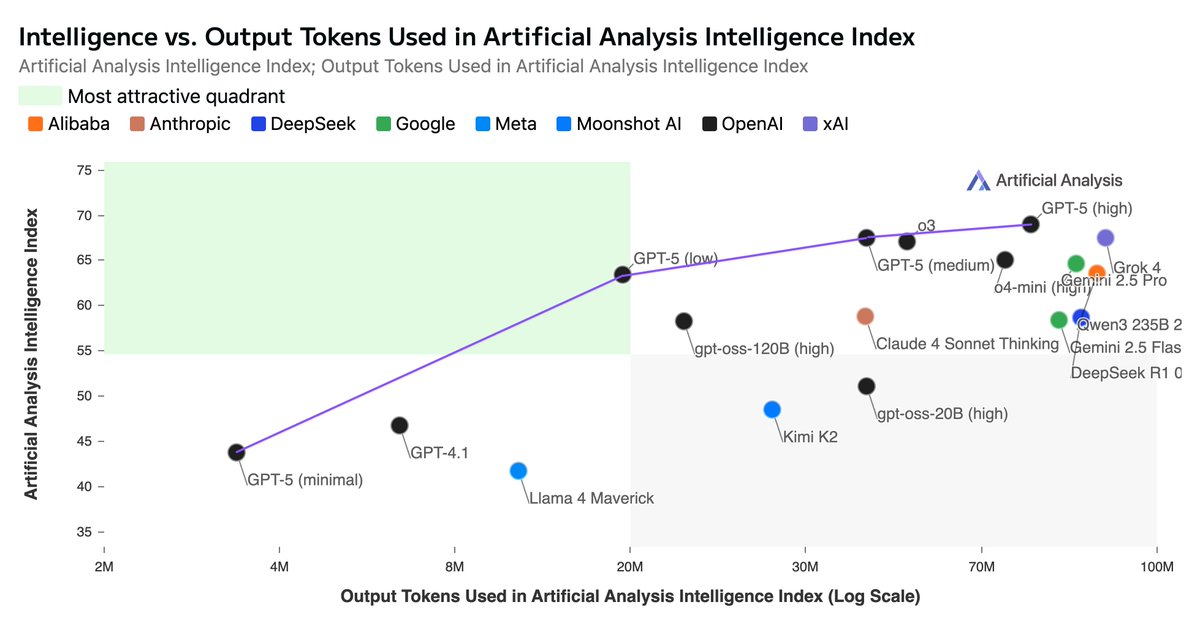


 Intelligence vs. Total Parameters: gpt-oss-120B is the most intelligence model that can fit on a single H100 GPU in its native precision.
Intelligence vs. Total Parameters: gpt-oss-120B is the most intelligence model that can fit on a single H100 GPU in its native precision.
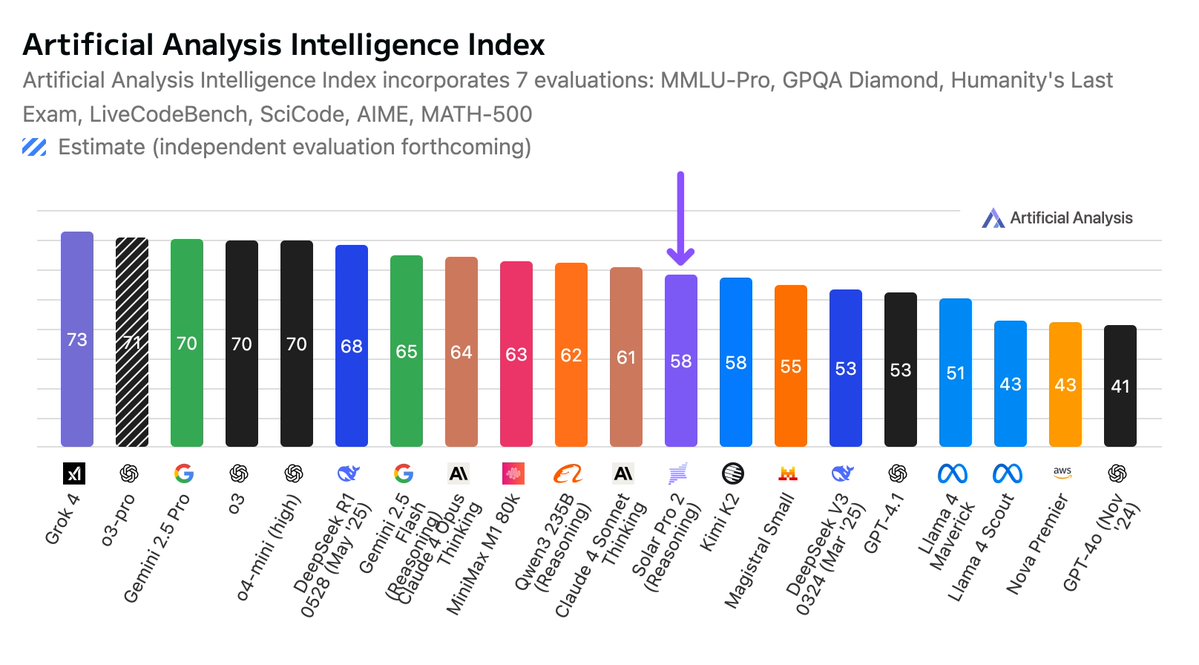
 Full suit of our independent intelligence evaluations:
Full suit of our independent intelligence evaluations: 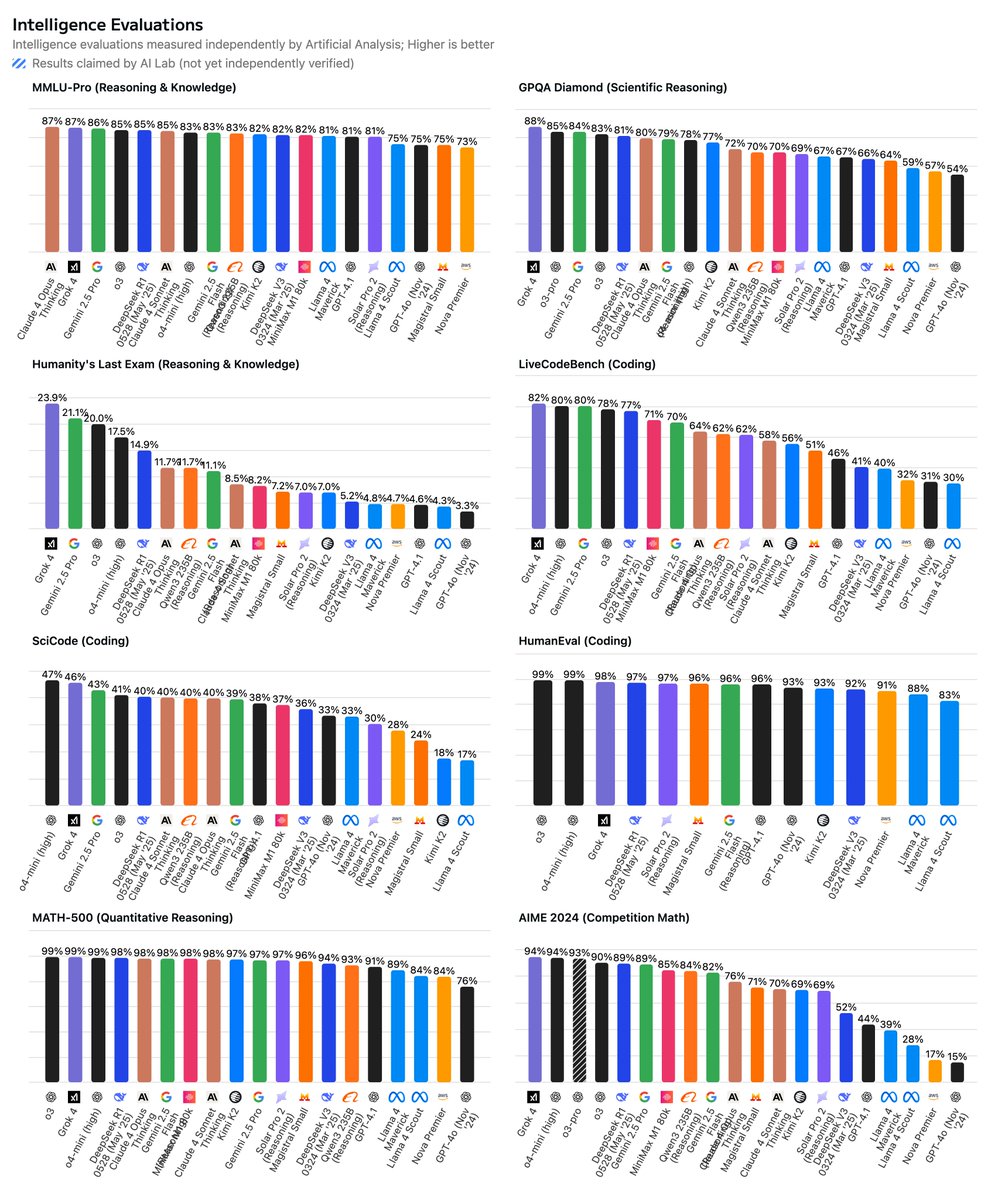
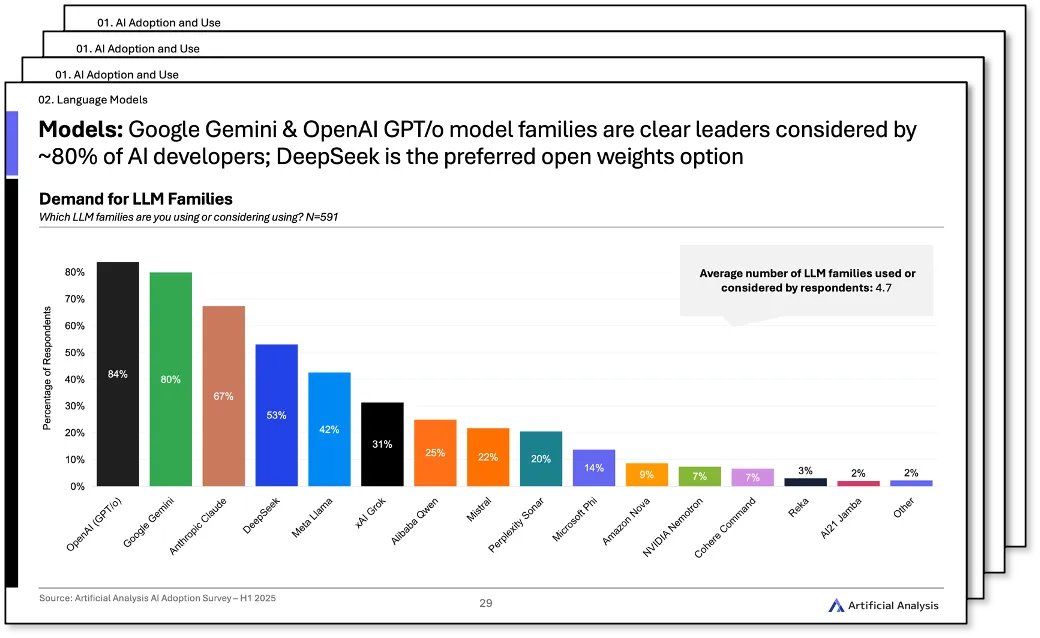
 ChatGPT dominates AI chat adoption, followed by Gemini and Claude. Other notable players include Perplexity, xAI Grok and Microsoft Copilot
ChatGPT dominates AI chat adoption, followed by Gemini and Claude. Other notable players include Perplexity, xAI Grok and Microsoft Copilot 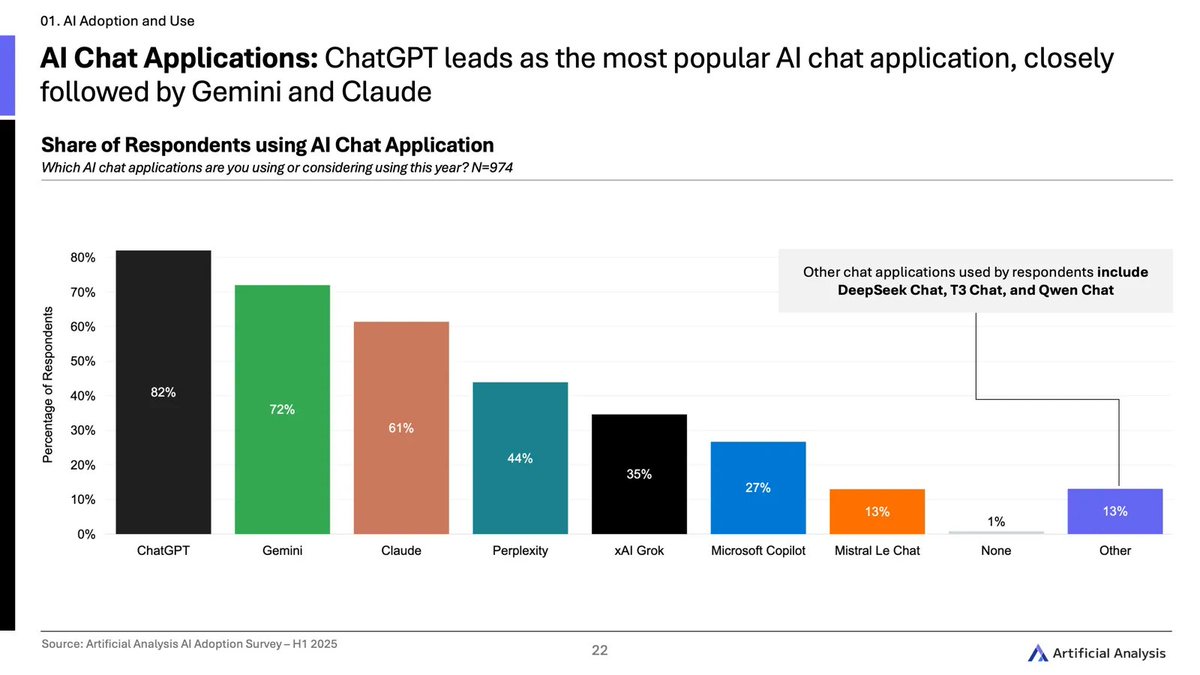

 Grok 4 scores higher in Artificial Analysis Intelligence Index than any other model. Its pricing is higher than OpenAI’s o3, Google’s Gemini 2.5 Pro and Anthropic’s Claude 4 Sonnet - but lower than Anthropic’s Claude 4 Opus and OpenAI’s o3-pro.
Grok 4 scores higher in Artificial Analysis Intelligence Index than any other model. Its pricing is higher than OpenAI’s o3, Google’s Gemini 2.5 Pro and Anthropic’s Claude 4 Sonnet - but lower than Anthropic’s Claude 4 Opus and OpenAI’s o3-pro. 


 Google has consistently been shipping intelligence increases in its Gemini Pro series
Google has consistently been shipping intelligence increases in its Gemini Pro series 

 DeepSeek has maintained its status as amongst AI labs leading in frontier AI intelligence
DeepSeek has maintained its status as amongst AI labs leading in frontier AI intelligence 

 Breakdown of token usage, pricing and end-to-end latency.
Breakdown of token usage, pricing and end-to-end latency. 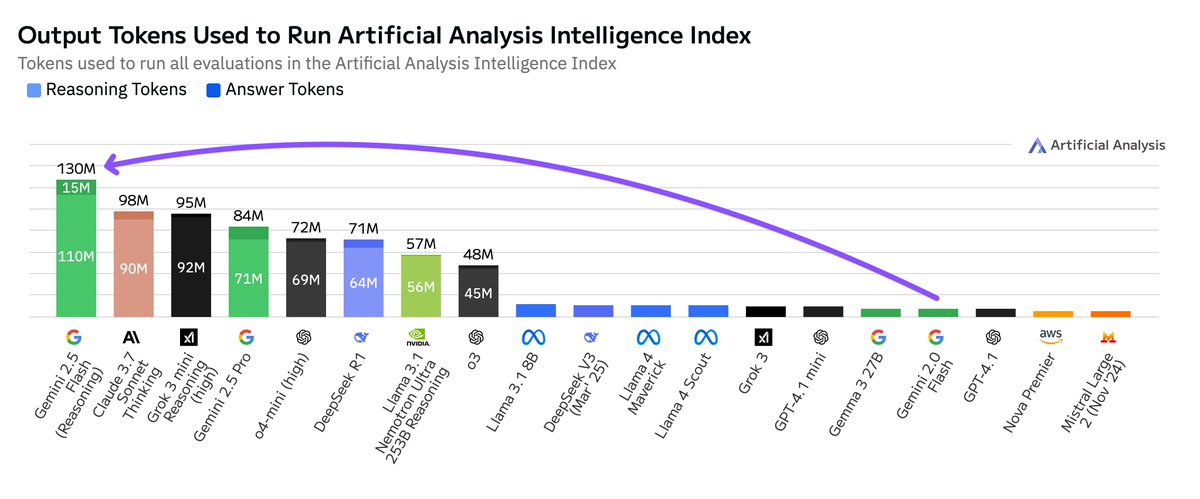

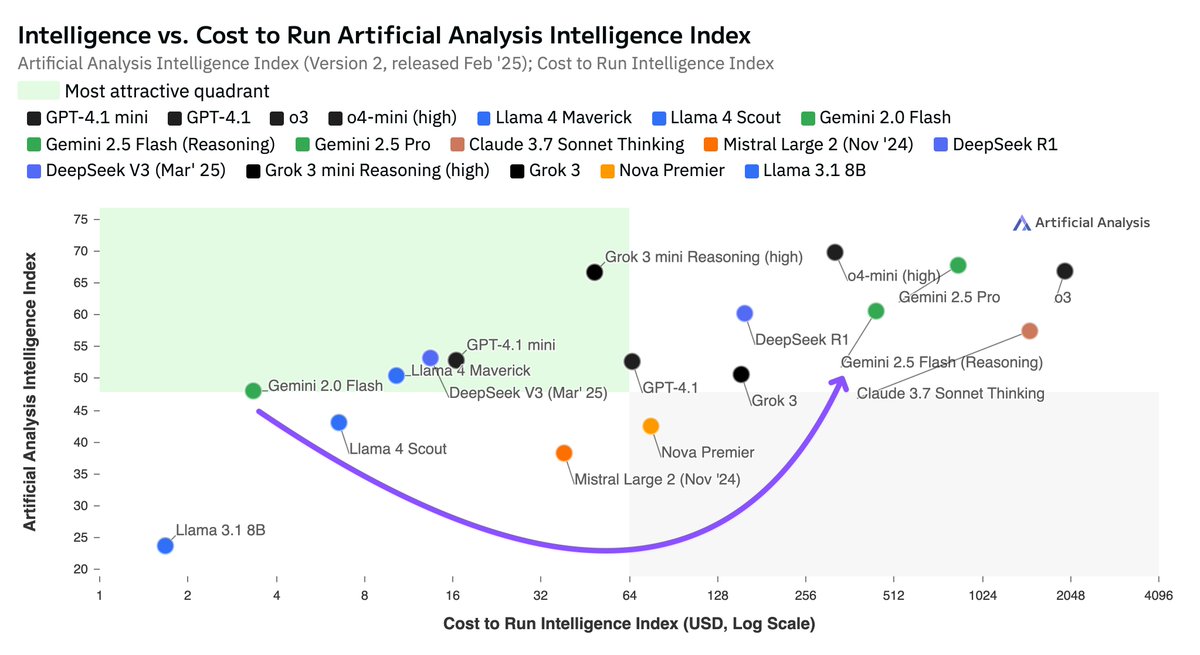


 GPT-4o (March 2025) is now the leading non-reasoning coding model, surpassing DeepSeek V3 (March 2025) and Claude 3.7 Sonnet in the Artificial Analysis Coding Index (made up of LiveCodeBench and SciCode) and is #1 in LiveCodeBench
GPT-4o (March 2025) is now the leading non-reasoning coding model, surpassing DeepSeek V3 (March 2025) and Claude 3.7 Sonnet in the Artificial Analysis Coding Index (made up of LiveCodeBench and SciCode) and is #1 in LiveCodeBench 


 DeepSeek V3-0324 marks the first time an open weights model has been the leading non-reasoning model.
DeepSeek V3-0324 marks the first time an open weights model has been the leading non-reasoning model. 

 Deep-dive into the evals included in Intelligence Index V2
Deep-dive into the evals included in Intelligence Index V2


 DeepSeek’s first party API is impressive: both faster and cheaper than the initial offerings from other leading inference providers serving R1.
DeepSeek’s first party API is impressive: both faster and cheaper than the initial offerings from other leading inference providers serving R1.

 DeepSeek have continued to price their first party API aggressively. DeepSeek V3 is priced slightly higher than models like GPT-4o mini and Gemini 1.5 Flash but much cheaper than the frontier models of comparable intelligence.
DeepSeek have continued to price their first party API aggressively. DeepSeek V3 is priced slightly higher than models like GPT-4o mini and Gemini 1.5 Flash but much cheaper than the frontier models of comparable intelligence.